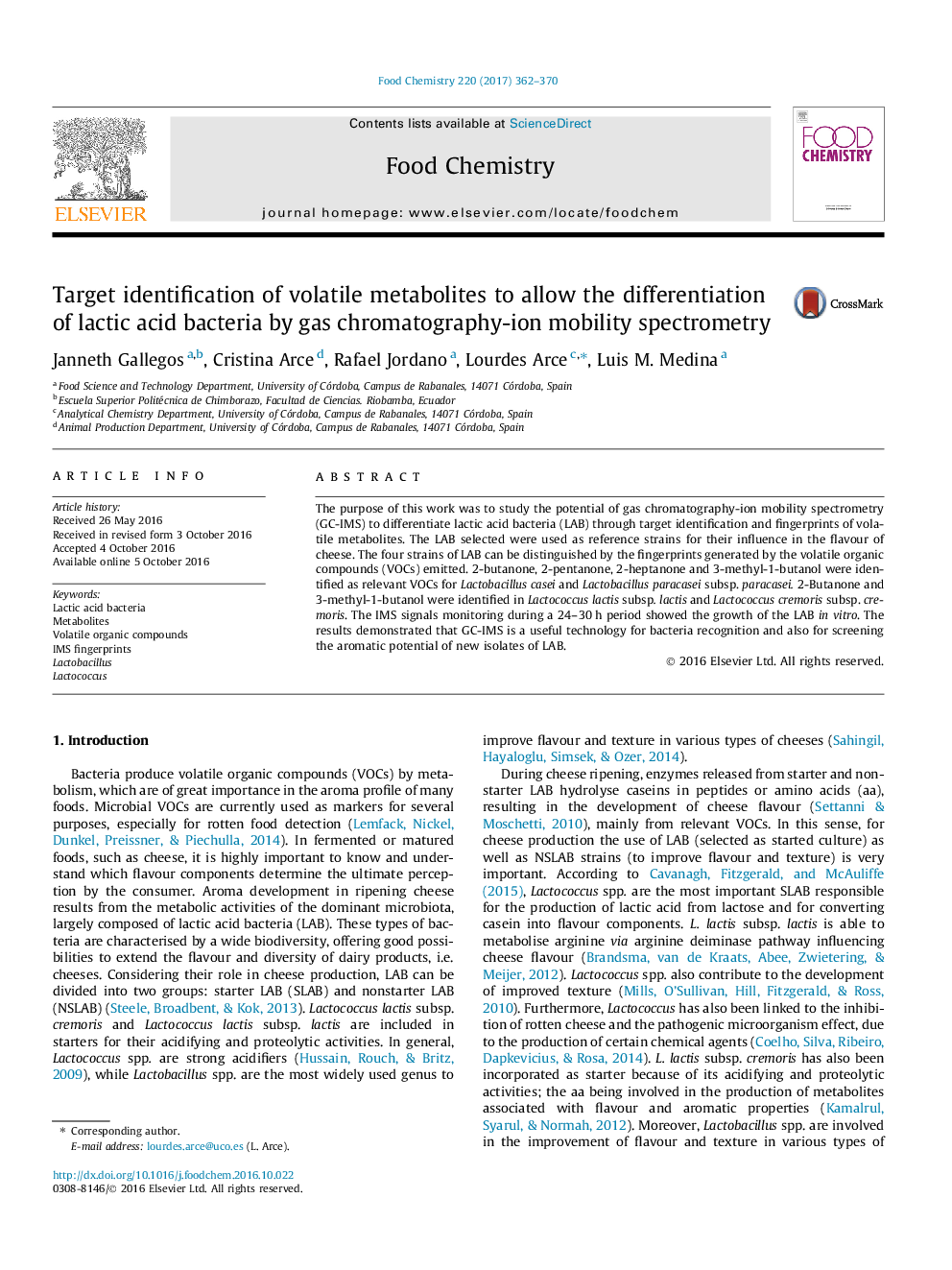| Article ID | Journal | Published Year | Pages | File Type |
|---|---|---|---|---|
| 5133983 | Food Chemistry | 2017 | 9 Pages |
â¢GC-IMS enables the detection of volatile metabolites from lactic acid bacteria (LAB).â¢Target metabolites allow the differentiation of Lactobacillus and Lactococcus strains.â¢A PCA with spectral data of LAB lead to the differentiation of 4 strains of LAB.
The purpose of this work was to study the potential of gas chromatography-ion mobility spectrometry (GC-IMS) to differentiate lactic acid bacteria (LAB) through target identification and fingerprints of volatile metabolites. The LAB selected were used as reference strains for their influence in the flavour of cheese. The four strains of LAB can be distinguished by the fingerprints generated by the volatile organic compounds (VOCs) emitted. 2-butanone, 2-pentanone, 2-heptanone and 3-methyl-1-butanol were identified as relevant VOCs for Lactobacillus casei and Lactobacillus paracasei subsp. paracasei. 2-Butanone and 3-methyl-1-butanol were identified in Lactococcus lactis subsp. lactis and Lactococcus cremoris subsp. cremoris. The IMS signals monitoring during a 24-30Â h period showed the growth of the LAB in vitro. The results demonstrated that GC-IMS is a useful technology for bacteria recognition and also for screening the aromatic potential of new isolates of LAB.
